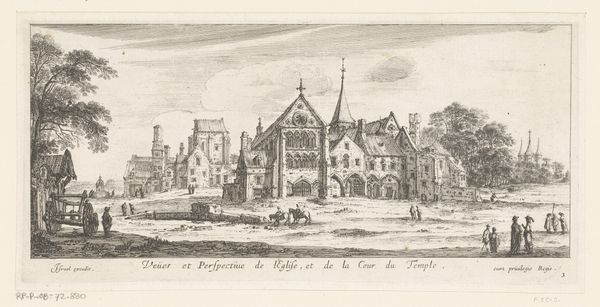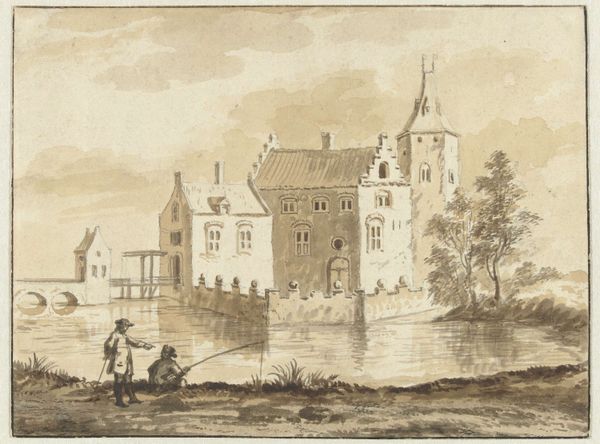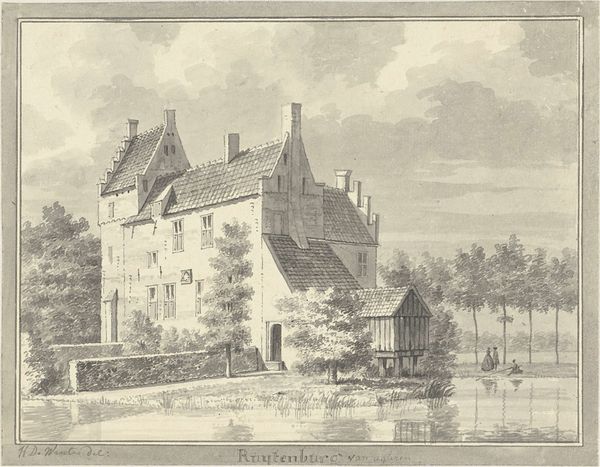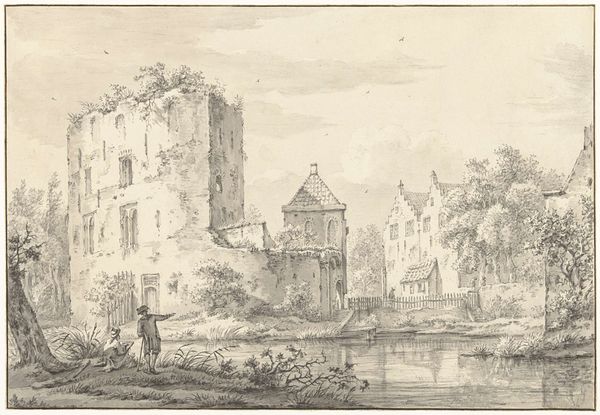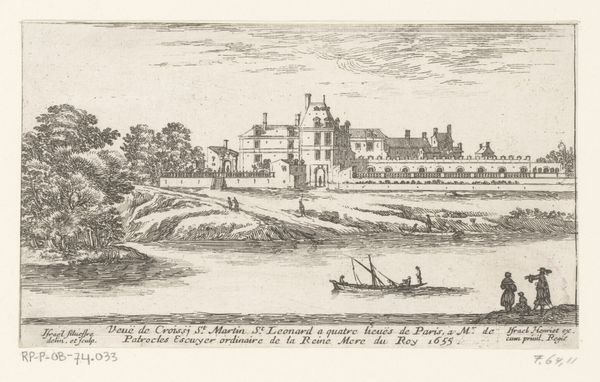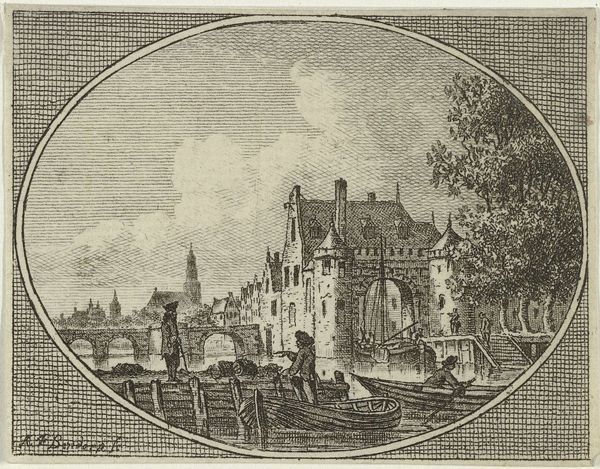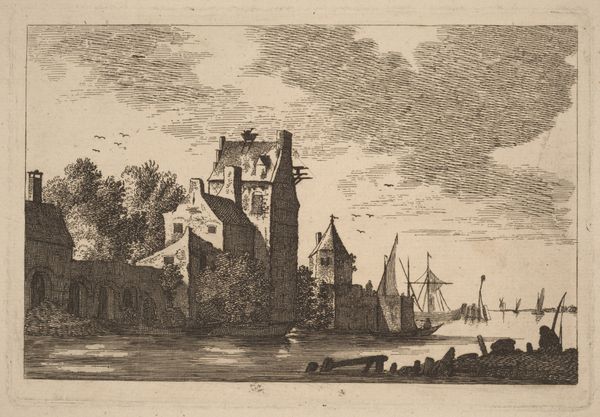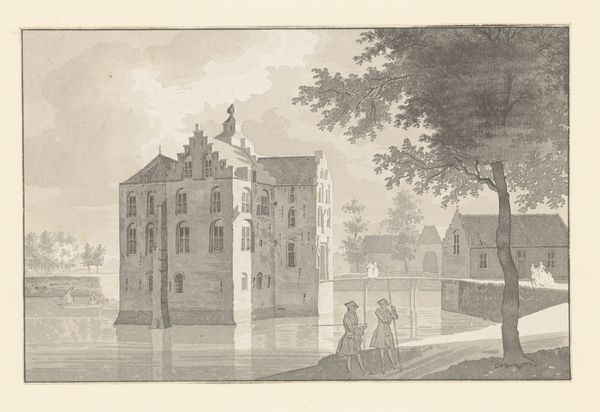
print, engraving
#
dutch-golden-age
# print
#
old engraving style
#
landscape
#
cityscape
#
engraving
Dimensions: height 131 mm, width 199 mm
Copyright: Rijks Museum: Open Domain
Editor: This is Claes Jansz. Visscher's 1617 engraving, "Slot Purmersteijn in Purmerend," housed in the Rijksmuseum. It has such incredible detail! The way the light reflects on the water... What social narratives might be at play here? Curator: What stands out to me is the way this idealized landscape clashes with the social realities of the Dutch Golden Age. We see peasants engaged in leisure activities, fishing, and boating. It suggests a harmony and prosperity, doesn’t it? Editor: Yes, it does. Curator: But this idealized vision often masked the deep social inequalities inherent in the burgeoning capitalist system. The wealth that enabled this artistic production was often built on the backs of exploited labor and colonial ventures. Where do you see that tension manifested in the image itself? Editor: I see it in the scale, maybe? The castle is dominant, yet the peasants populate the foreground. It’s almost as if their presence is just… scenic. Not really representative of lived experience, but used for atmosphere. Curator: Precisely. Visscher's engraving offers a window into the complex relationship between art, power, and representation in a society undergoing profound social and economic transformation. It prompts us to question whose stories are being told, and whose are being omitted or obscured. Editor: It makes you wonder what was just outside the frame…Thank you, I hadn’t considered the colonial implications, but that gives me so much more to think about! Curator: My pleasure. Thinking about these complex socio-historical forces changes the way we view seemingly simple landscapes forever.
Comments
No comments
Be the first to comment and join the conversation on the ultimate creative platform.
